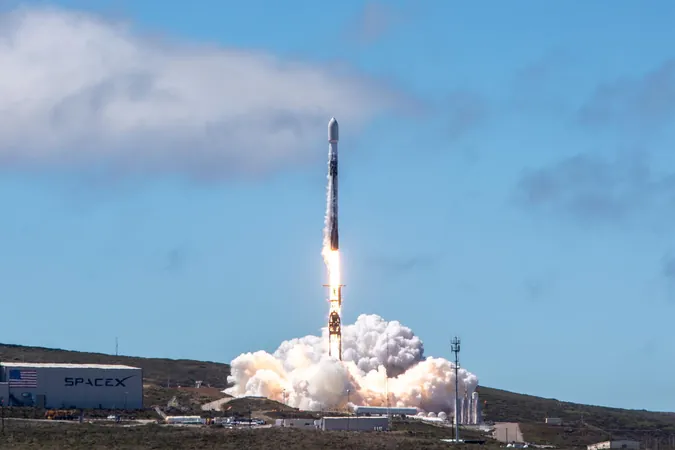
NASA's TRACERS Mission Takes Flight: Unlocking the Secrets of Space Weather
2025-07-25
Author: Rajesh
NASA Launches Groundbreaking TRACERS Mission
In a thrilling development for space exploration, NASA successfully launched its TRACERS (Tandem Reconnection and Cusp Electrodynamics Reconnaissance Satellites) mission on Wednesday at 2:13 p.m. EDT. The mission soared into the skies aboard a SpaceX Falcon 9 rocket from Vandenberg Space Force Base in California.
A New Era in Understanding Space Weather
Just three hours after separation, ground controllers established contact with both satellites, marking the start of an intense four-week commissioning phase. Once fully operational, TRACERS promises to revolutionize our understanding of space weather and its impacts on satellites and communication systems.
Orbing in Harmony: The Twins' Unique Trajectory
The twin satellites will maneuver in close formation, trailing each other by a mere 10 seconds as they venture through the polar cusp—an open gateway in Earth's magnetic field near the North Pole. This is where energy and particles from the solar wind make their dramatic entrance into near-Earth space.
Measuring Magnetic Connections: A Year of Discovery Ahead
Throughout the next year, TRACERS is set to record around 3,000 measurements to explore the phenomenon of magnetic reconnection. This explosive event occurs when magnetic field lines snap and realign, unleashing vast amounts of energy. The mission seeks to create a stunning 'time-lapse' of how the Sun's magnetic field links with Earth's, allowing scientists to follow the energetic solar bursts as they cascade towards our planet.
A Step Towards Future Exploration
According to principal investigator David Miles from the University of Iowa, "TRACERS is set to transform our understanding of Earth’s magnetosphere," highlighting the mission’s significance for both space weather forecasting and future explorations of the Moon and Mars.
A Show of Strength in Space Science
Acting NASA Administrator Sean Duffy hailed the launch as a demonstration of America's leadership in space science research. However, his recent letter drawing attention to budget cuts and safety concerns, signed by nearly 300 NASA employees, adds a contrasting note to this triumph.
Collaborative Efforts to Understand Solar Wind
The TRACERS satellites will work synergistically with other NASA missions like MMS and the recently launched PUNCH and EZIE satellites. Together, these initiatives aim to paint a comprehensive picture of how solar wind interacts with our planet.
Innovative Payloads to Assist Mission Goals
In addition to the primary mission, TRACERS carried three secondary payloads: Athena EPIC, a small satellite testing a flexible commercial bus; PExT, which bridges commercial and government communications networks; and REAL, a CubeSat studying how energetic electrons escape the Van Allen radiation belts.




 Brasil (PT)
Brasil (PT)
 Canada (EN)
Canada (EN)
 Chile (ES)
Chile (ES)
 Česko (CS)
Česko (CS)
 대한민국 (KO)
대한민국 (KO)
 España (ES)
España (ES)
 France (FR)
France (FR)
 Hong Kong (EN)
Hong Kong (EN)
 Italia (IT)
Italia (IT)
 日本 (JA)
日本 (JA)
 Magyarország (HU)
Magyarország (HU)
 Norge (NO)
Norge (NO)
 Polska (PL)
Polska (PL)
 Schweiz (DE)
Schweiz (DE)
 Singapore (EN)
Singapore (EN)
 Sverige (SV)
Sverige (SV)
 Suomi (FI)
Suomi (FI)
 Türkiye (TR)
Türkiye (TR)
 الإمارات العربية المتحدة (AR)
الإمارات العربية المتحدة (AR)